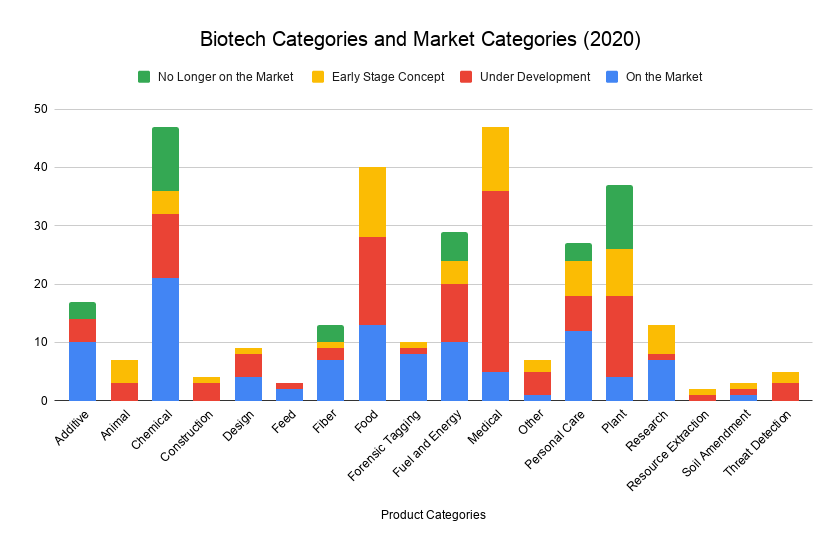(Washington, DC): This week, thousands of people will convene (virtually) for the Global Bioeconomy Summit, a biennial event normally held in Berlin to discuss emerging opportunities and challenges of the bioeconomy. Many anticipate the biotechnology market to be worth US$727.1 Billion by 2025, so events like these are capturing the increased attention and active involvement of government agencies that may be key to driving growth in multiple economic sectors in the future. As public and private sector investments ramp up, what exactly can we expect in terms of new applications and products?
Two years ago, the Environmental Law Institute (ELI) received support from the U.S. Department of Agriculture to develop a web-based, searchable database of new and emerging biotech products and applications. The database, located at futurebioengineeredproducts.org, now contains over 300 entries. This ever-growing repository allows users to filter and search based on product categories, market status, and production processes, among other criteria. As of November 2020, over 50 countries have visited the website, with high traffic from Japan, China, Canada, and the United Kingdom.
As the figure below illustrates, the database’s more than 300 records fall into 17 distinct categories. Chemical-, Food-, Medical-, and Plant-related applications constitute over half of the database’s current records. Each of these categories has grown significantly—the number of products in the Food category has more than doubled since 2018, as cellular agriculture and crop modification posit sustainable solutions to a growing global food crisis.

In the past year, ELI added many novel biotechnology products and applications to the database in a number of categories. One example from the Animal category is a gene-editing application from the private biotechnology company Recombinetics, which has successfully enabled the production of hornless cattle, providing a potential solution to the animal and human welfare concerns around physical dehorning.
In the Food category, Impossible Foods has developed a plant-based alternative to pork, the most consumed meat in the world. Like the company’s popular beef substitute, soy is the main protein source and coconut and sunflower oils are the main fat sources. And, like the Impossible Burger, the pork alternative’s distinct meatiness comes from soy leghemoglobin (or heme) produced by fermenting genetically engineered yeast that contains DNA from soy plants.
This year also saw the addition of a new on-the-market entry in the Soil Amendment product category, one that seeks to fundamentally change the way crops like corn have traditionally been fertilized using ammonia-based synthetic chemicals. The product, Pivot Bio PROVEN, uses a nitrogen-producing microbe that adheres to the roots of corn plants through an in-furrow application. The microbes continually feed nitrogen to the crop throughout the growing season, with increased nitrogen production at important growing stages.
Visit futurebioengineeredproducts.org to search the database for more of the latest biotechnology products and applications. For information on ELI’s Future Bioengineered Products Database, please email biotech@eli.org.